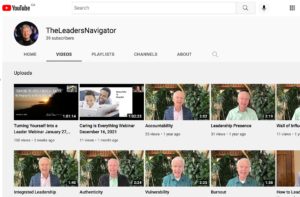True human beings know.
the door will open.
Some people break during difficult times, while others break open and lead us into a better world. As this pandemic wears on, it is time to examine how to allow the pain of it to break us open so a stronger, wiser and kinder self can emerge. If we can use the present reality as an opportunity to clarify our values and grow into better people, we can inspire others to pull out of their despair and fear and trade distraction and denial for deepening and connecting.
In other words, if we can open our hearts to ourselves, with all our shortcomings and all of our beauty, we can then open our hearts to others and do our part to create a new world.
And we can begin to do that by taking the authentic journey, which I suggest starts with the following:
Be Real
There’s something attractive about realness. We are drawn toward what is real, like sunsets, beauty, and honesty. There’s an unwritten rule in the speaking profession: Don’t give a motivational speech at a funeral. It might be a good message but the timing sucks.
Being real means we respect ourselves enough to be honest with ourselves and the people that matter to us. We have to be willing to face our fears honestly before we can call ourselves courageous. And the most courageous thing we can do is ask for help.
Being real means it’s okay to not be okay, and trust that we’ll get through this and move forward together – with honesty, grace, and compassion. We have to grieve before we build.
Find a champion
An inspiring cornerstone of the Calgary Catholic School District is the commitment to every student having a champion. Every child deserves a one-on-one relationship with an adult in the school who believes in them unconditionally, who knows they have their back, and who is in their corner. In order to ensure that every child has a champion, every employee must have a champion.
The journey of transforming difficulty into an adventure that opens us to growth may be a lonely journey, but it can’t be done alone. The lone-warrior model of leadership is heroic suicide. We all need champions in our lives – confidants that hold space for us while we hold the space for others and allies that stand beside us and behind us. We all need at least one person in our life who believes in us when we can’t find it in ourselves.
Choose a growth mindset
Carol Dweck, a Stanford University psychology professor, has done extensive research on mindset. She has found that our mindset exists on a continuum, from fixed to mixed to growth.
People with a fixed mindset are attached to the comfort of their current perception of themselves and others and to not failing. People with a growth mindset, on the other hand, don’t let their fears determine their choices. They are less attached to the opinion of others and thus are more willing to step into the possibility that comes from uncertainty. A growth mindset – a willingness to be vulnerable, learn, grow, and be up for challenges that are ahead – thrives in periods like the pandemic. When difficulty or obstacles arise, instead of, “Why is this happening to me?” a growth mindset asks, “How is this happening for me?”
Get stronger
After recovering from polio meningitis when I was four, my father took painstaking efforts to incrementally build my strength each day. He would lift me up on the parallel bars and have me practice holding myself there. We had a daily routine of 5BX exercises and time on the tumbling mat. He was a nationally ranked gymnast and he encouraged me every day to get stronger.
Even today, forty years after his passing, I can hear him say, “Don’t pray for life to get easier. Pray for you to get stronger.” Both his wisdom as well as his health habits have stayed with me through all kinds of difficult periods in my life. It’s a reminder that resilience and security don’t come from the world; they come from my capacity to access resources from within. Strengthening habits – like weight training, meditation, yoga, relaxation, rest and opening up to others – have sustained me through all the difficult times of my life.
Clarify A Compelling Vision
A friend of mine works for an organization called AAWEAR, a group of people in Alberta with a history of hard drug use. Through supporting each other, educating others, and raising awareness of health issues, AAWEAR strives for an improved quality of life for those in the drug using community.
My friend meets daily with people who live in tents and on sidewalks in the city of Edmonton. His vision is to help those who struggle with drug abuse and homelessness recognize that they deserve respect and understanding within their community. No matter how dark things get around him, Tyler is inspired by a vision to help others live a better life.
What inspires you in the difficult times? What gets you up early? What keeps you up late? What inspires you to keep walking through the rough terrains of your life to see you through to the other side? We all need a vision – beyond our own self-interest – to keep us moving forward through inevitable doldrums and disillusionments of life’s journey.
We all have the capacity to inspire and empower others. But it takes a devotion to our personal growth and development to embrace times of change and difficulty, such as this pandemic, and reach within so a better person can emerge. Hard times can motivate us to embody the hero within us. The psychologist, Carl Jung, believed that “the privilege of a lifetime is to become who you truly are.” This journey is described in my book,
The Other Everest: Navigating the Pathway to Authentic Leadership, and the journey we go through in our
Life In Transitions course. It is the journey to the deeper aspects of our nature that awaken us to who we are meant to be. And that is how we can use this beast of a pandemic to find what is beautiful in ourselves and the world around us.






